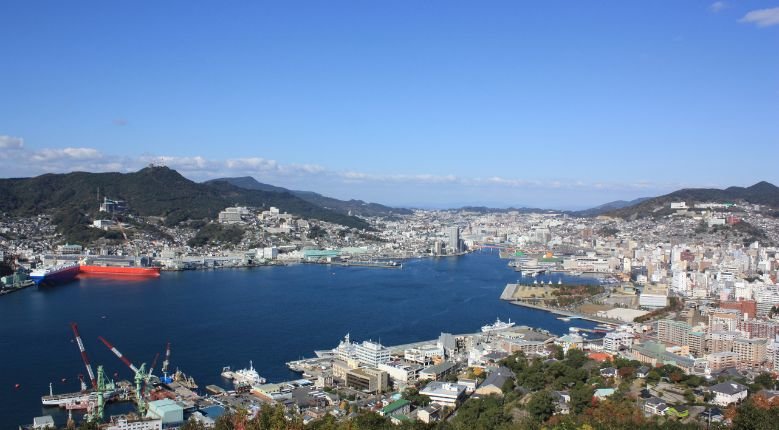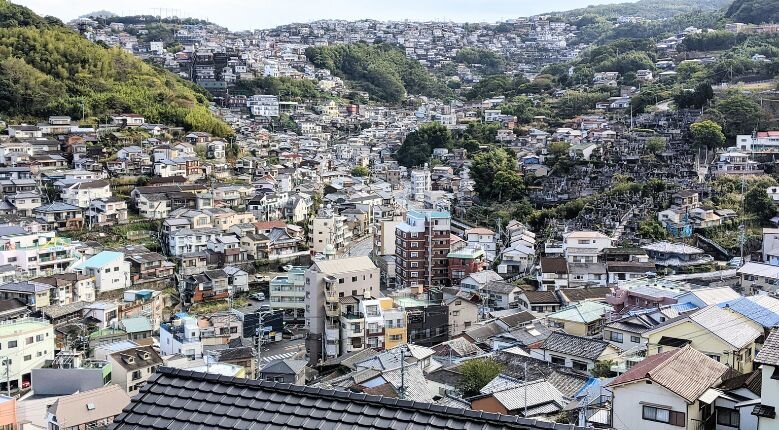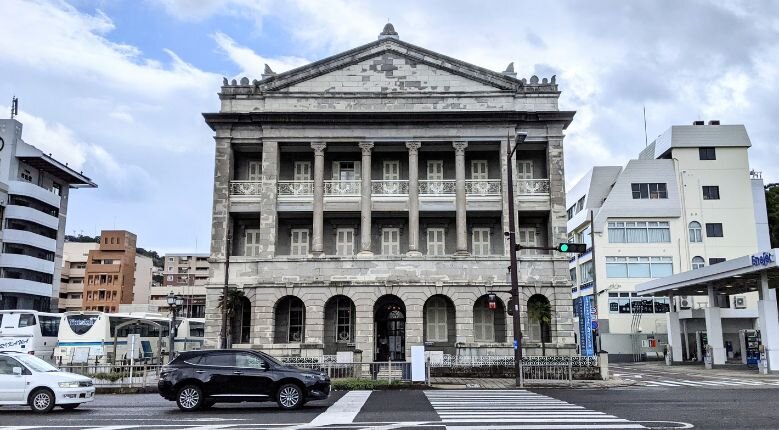
Nagasaki City, a port city with a rich and complex history. (Photo from: ©Kyushu Tourism Organization)
Nagasaki City is most well known for its tragic past, as one of the two cities impacted by the dropping of the atomic bombs in 1945 during World War II, along with Hiroshima. This event often overshadows its importance as one of Japan’s main port cities that sits close to the Asia mainland: in the Edo period (1603-1868), Nagasaki City continued operating as the only port for international trade, despite Japan closing its doors to other countries.
The city located in Nagasaki prefecture played an important role in fostering Japan’s relations with other countries. Through trade with its exclusive partners, China and the Netherlands, it built a unique culture — this can be felt immediately in its surroundings, its architecture and its food once you step foot into the city. We explore the main sites you should visit for a one-day itinerary here.
Viewpoint at the Glover Garden

Glover Garden (Photo from: © NPTA)
An important and stunning attraction in Nagasaki city, Glover Garden is an open-air museum consisting of mansions previously settled by the city’s former foreign residents.

The view from the hill around Glover Garden in Nagasaki City. (Photo from: Jerome Lee)
Even if you don’t end up forking over the entrance fee to enter the museum, the view from the area surrounding Glover Garden isn’t too shabby either — look out and you’ll see Nagasaki harbourfront in one direction, and multiple houses stacked like a staircase in another!
The Former Hong Kong and Shanghai Bank, Nagasaki Branch Museum

The former Hong Kong and Shanghai Bank, Nagasaki Branch Museum. (Photo from: Jerome Lee)
The Nagasaki Museum of Modern-Era Exchange is attached to the venue, which introduces Nagasaki’s history as an international trade port and details the friendship between Sun Yat-sen, the father of the Chinese revolution, and Shokichi Umeya, the Nagasaki entrepreneur who supported the revolution. Take some time to explore the history and watch the short video in the museum that comes with it.






